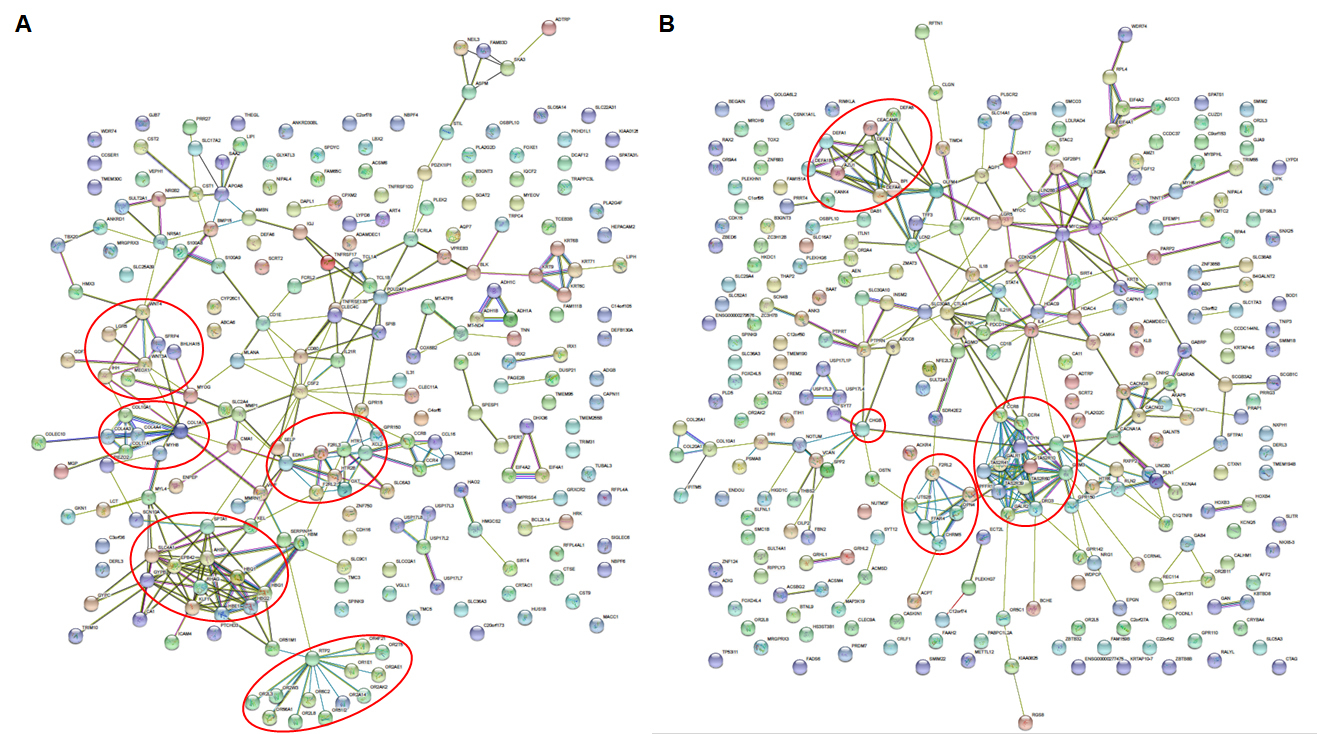Final ID: TMP3
Identifying Sex-specific Biomarkers of Unruptured Cerebral Aneurysms through Revisiting Cerebral Aneurysm Transcriptomes
Abstract Body: Cerebral aneurysms (CA) arise from the sites of weakened artery walls in the brain, and they may cause hemorrhagic stroke, coma, and death when they rupture. Studies have revealed sex differences in ~1.5 times higher prevalence of CA and ~1.5 times higher CA rupture rate in females. It is believed that mechanisms of CA formation in women may differ from those in men; however, sex-specific CA biomarkers are poorly identified. We hypothesized that sex-specific CA biomarkers can be identified through cross-comparison between sexes using transcriptomics. Here, we reanalyzed 100 RNAseq samples containing 62 unruptured CAs (20 males/42 females) and 38 normal (19/19) acquired from 3 datasets of 6 manuscripts published between 2016 and 2021 for sex-specific biomarker identification in unruptured CA. Reanalysis of ~40K differentially expressed genes (DEGs) of transcriptomes filtered 1,106 and 1,133 CA genes in males and females respectively under the cutoff set at a 2-fold difference with a significant difference at p<0.05 (Image 1A-B). 117 genes were conserved biomarkers for both sexes, and the remaining 989 and 1,016 genes were classified as sex-specific biomarkers of unruptured CA in males and females, respectively (Image 1C). In Gene Set Analysis (GSA), intriguingly, although the ribosome biogenesis in eukaryotes pathway (03008) was enriched in both sexes, rRNAs were highly expressed in females whereas snoRNAs were predominant in males. Besides, pathways linked to micro-/onco-immunity jumped out but were distinct in both sets of biomarkers (05165, 05146, 05203, 04151 & 04061 in females, 05150, 05206, 05205, 05202, 04060 & 04630 in males). REACTOME analysis also highlighted pathways associated with DNA integrity and repair (5693532, 69481, 69620, 69473, 5693538, 5693606, 5693565, 5693607 & 5693567) in females, and pathways related to antimicrobial immunity (6798695, 6803157, 5683057, 1462054, 1461973, 168256 & 168249) in males (Image 2). Finally, STRING functional protein analysis identified multiple hub genes including COLs (collagen) and WNTs (Wnt signaling) in females, and DEFAs (defensin), BPI (bactericidal permeability-increasing protein), and LCN2 (lipocalin, anti-bacterial innate immunity) in males, which aligns abovementioned pathways (Image 3). These analyses suggest that antimicrobial immunity is a risk factor for CA. Taken together, this study reveals sex-specific CA biomarkers and provides insights for sex-dependent pre-diagnosis for future studies.
More abstracts on this topic:
Adult-onset Kawasaki Disease: An Updated Review of the English-Language Literature from 1980 Through 2023
Adusei Poku Frank, Biney Bernice, Mensah Samuel, Ampadu Joshua Oppong, Aghasili Chukwuemeka, Oppong-twum Sandra, Baygani Shawyon, Okafor Henry
A New Small-Molecule ErbB4 Agonist Attenuates Adverse Ventricular Remodeling After Myocardial Infarction In a Sex-Specific MannerGoovaerts Bo, Civati Celine, Feyen Eline, De Keulenaer Gilles, Segers Vincent
Readers' Comments
We encourage you to enter the discussion by posting your comments and questions below.
Presenters will be notified of your post so that they can respond as appropriate.
This discussion platform is provided to foster engagement, and simulate conversation and knowledge sharing.
You have to be authorized to post a comment. Please, Login or Signup.
Rate this abstract
(Maximum characters: 500)



